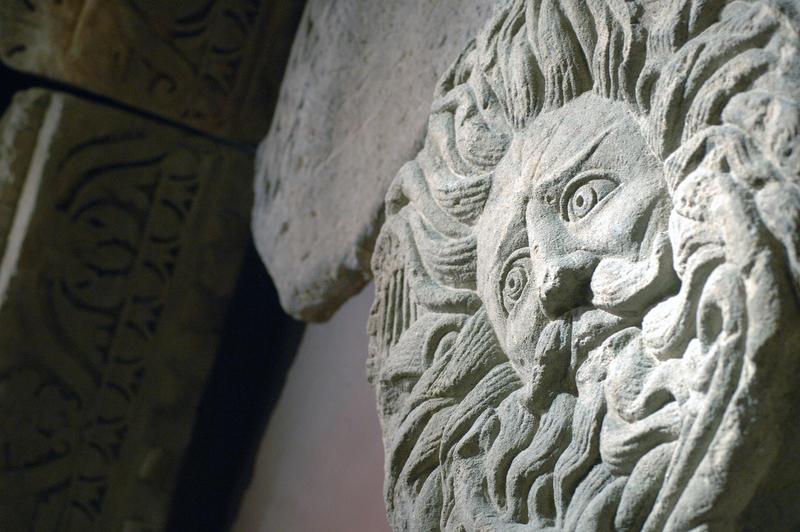Ah, the Roman architecture. How ecstatic! The material finishings, composition, intricate carvings, ecstatic designs and most important, the columns. These characteristics reveal themselves in the hot springs that emerge from the wonderful Roman Baths which dates back to the late 1st century. Millions of visitors from around the world visit this public bathing site just to see the Roman luxury. What is it that makes the Baths incredibly famous?
Introduction
The Roman Baths, which began construction between 60-70 AD, was a public bathing site used by the Romans. It’s a historical site that’s now been converted to a magnificent museum.

There are many features to the bathing site including several pools, changing rooms, sweat rooms and the Great Bath.
There are multiple sections to the Baths: the Sacred Spring, the Roman Temple, the Roman Bath House and the Museum. However, the main attraction is the picturesque “Grand Pump Room”. Despite the beauty portrayed throughout the rooms, the Grand Pump Room is filtered with the finest of grandeur.
The modern day Bath was known as Aquae Sulis(“waters of Sulis”). The Roman’s discovered that this city had natural hot springs; with the advantage, it led them to construct such a famous complex. The hot water that bubbles the hot springs uses the geothermal energy from the limestone aquifers which are found from the nearby Mendip Hills.
Before the Romans occupied the land, Celts dedicated the waters to their Goddess – Sulis. When the Romans came, they identified it with a similar Goddess – Minerva. Thus making Sulis Minerva. Hence, the temple became a place for both Celts and Romans to worship.
There’s a sign at the very beginning which explains this and there’s also a golden bust of the Goddess Sulis Minerva towards the end.
Ok, enough background, let’s go inside the museum!
The Museum
Upon entrance, there’s an open area with statues of famous Roman heroes standing on the supporting ledges. The welcome really boasts itself with such famous heroes and with the centre of attention being the emerald coloured pool. Before you head off to the main pool, there’s plenty of information to be found about the history and the preserved objects. Handily, you’re offered audioguides(which are in 12 languages) at the entrance which are superb! They have detailed descriptions and are neatly organised to guide you through the museum. For all the Bill Bryson fans out there, you’re going to love the audio guide! He specially recorded some of the sections for you…
Before the main section, there are several interesting objects that the museum has collected.

Objects were thrown into the Sacred Spring as offerings to the Gods. Many were found but specific are the 12000+ Roman coins which still shine in the water with awe. These coins are found across the Baths.
One interesting object is the Gorgon’s head from the Temple pediment. Where the original Temple entrance was, there was a Gorgon’s head which was centred in the triangular connection between the pillars. This along with several other pieces of the pediment are still there. Using visualisation, the museum has been able to model the rest of the pediment. The uniqueness was the numerous snakes that were intertwined with the Gorgon’s beard; the meanings are boundless yet interesting.

Beyond the many objects that are dotted in the museum, the rooms attract many people. These rooms were those used by the Romans centuries ago. The museum has done a magnificent job in setting up projectors to present videos of how the Romans would have used the rooms. The ambience in there and the archaic construction present an experience which make you feel like you’re there. Most importantly, the museum keeps almost everything open to the visitors.
There’s a section called the Spring Overflow, which, as the name suggests, is an overflow of hot springs. The water there is always flowing and it gets quite hot. The smoke blankets the stream and the light reveals the copper and limestone combination. The heat magnetised me to remain there for a couple of minutes. It was relaxing.

Onto the main section…
The main section is the Grand Pump Room which emphasises the emerald coloured water. Due to a lack of chlorine treatment and the build up of algae, the water presents itself in such a colour. The museum does maintain the water pressure and temperature though. As much as you desire jumping in there, the water quality restricts you from trying such things.
Due to an accident from the poor water quality, the Baths have been prohibited from use for bathing. However, there’s a bath spa nearby which has been recently developed to experience the waters.
What I relished about the Grand Pump Room is the open roof and surrounding columns. The air was fresh and the walkway around the pool was very original. I liked the archaic scene. This section brings relaxation right to you. The chattering of people, the traditional music and the scenery all complemented each other. I enjoyed my time there.
Towards, the end, there’s an opportunity to try the spring water. As you take your glass to try some, you will have observed the many disgusted faces from taking a sip already. Let’s just say that they’re not the best water… The water is a combination of several chemicals, however, it’s worth a try.
With the closest Roman experience you can get in England, it’s hard to avoid a visit to the Roman Baths. The historical feeling was the heart of the experience and the architecture still strikes you in unique ways. With such incredible preservation, the museum is certainly worth visiting. But make sure it’s a sunny day!


Leave a Reply